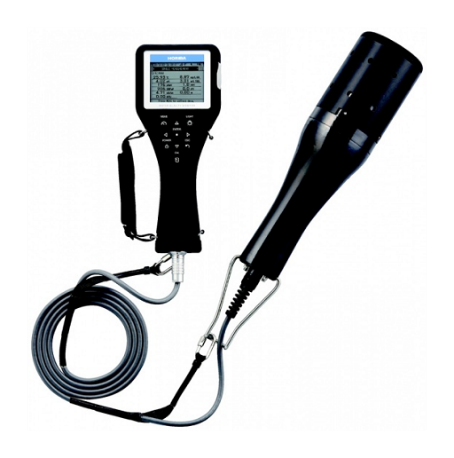Several water quality parameters must be measured before, during, and after construction to monitor environmental impacts. These will vary depending on local and state requirements and the type of construction you wish to undertake.
Today, we outline the most common water quality measurement factors and give some of the best examples of water meters capable of capturing the essential data.
Water Quality Testing
If you don’t manage your construction site responsibly, you will impact local ecosystems and risk ever-increasing local or state government fines. Most construction applications require at a minimum physical sediment control. That is, you are required to divert uncontaminated water away from work areas, to minimise erosion, and reduce environmental disturbance.
If managing a sizeable development or a development in a high-risk area, such as near a river or stream, further water quality testing may be required. These extra controls recognise waterways as integral to the health of valuable ecosystems. Rapid changes in a water column or the degradation of water quality will impact the stability of these environments.
Water quality is determined by collecting data for the testing parameters listed below, then comparing results with published standards. Government authorities will advise you on the factors you need to measure for each development.
The critical water quality parameters are:
1. Turbidity
2. Total suspended solids (TSS)
3. pH
4. Conductivity and Salinity
5. Dissolved oxygen (DO)
6. Oxygen reduction potential (ORP)
1. Turbidity
Turbidity is the cloudiness or haziness of water caused by small suspended particles. The higher the turbidity of a water sample, the higher amount of suspended solids present.High turbidity impacts water quality in several ways:
- Suspended particles will absorb heat from sunlight, making turbid waters warmer. Warmer water will reduce the concentration of oxygen present.
- Suspended particles within water bodies will scatter light. Scattering light decreases the photosynthetic ability of plants and algae, which further contributes to lowering the oxygen concentration of water.
2. TSS (Total Suspended Solids)
Total suspended solids (TSS) refers to the direct measurement of particles greater than 2 microns in size found in a water column. While there is some overlap between Turbidity and TSS, the defining difference is that TSSincludes settleable solids.
3. pH
The potential of hydrogen or ‘pH’ is the measure of hydrogen ion concentration in liquids. The pH scale indicates the acidity or alkalinity of runoff from a construction site.Contaminated water can cause a shift in pH, which can damage both animal and plant life. A secondary effect is a change in the toxicity and solubility of chemicals and heavy metals that may be present in the water.
4. Conductivity and Salinity
Electrical conductivity refers to the concentration of ions in a sample. Salinity is the level of dissolved salts in the water. As saline water conducts electricity more readily than freshwater, measuring electrical conductivity is a simple means of determining salt level pollution.
5. Dissolved Oxygen
Dissolved oxygen is vital for aquatic life and the decomposition of organic matter. If managing a construction project near a body of water, you may be required to monitor dissolved oxygen levels at specified locations, both on and off-site.
6. Oxidation-reduction potential (ORP)
Oxidation-reduction potential indicates the ability of a body of water to either clean itself or break down waste products, contaminants, dead plants, and animals. When the ORP value is high, there is lots of oxygen present in the water, and when it is low, there is less available oxygen. Don’t be surprised if authorities require you to measure both ORP and dissolved oxygen. The combination of data provides a more comprehensive indication of water quality and pollution levels.
Water Quality Meter Product Examples
It is essential to have the right equipment for your application. The product examples below cover a range of specifications (and price points). This information can assist you quickly zero-in on the right instrument for your requirements.
InsiteIG Portable Meter
Product Code: IC-IIG IPM
Parameters Measured: The one base unit will accept a range of sensors (sold separately) to measure Dissolved Oxygen, Total Suspended Solids, pH, and ORP.
Key Features of the IC-IIG IPM:
- Portable meter
- 250 point data logger that records sensor type, sensor reading, date, time, and location
- Automatically configures itself for the correct operation based on the input probe; and
- Connectivity via Portalog software (included at purchase), which offers several options to customise the downloading and reporting of collected data.
Horiba U-52 MultiParameter Water Quality Meter (2m cable)
Product Code: IC-U52-2M
Parameters Measured: Dissolved Oxygen, pH, Conductivity, Salinity, TDS, seawater Specific Gravity, Temperature, ORP, and Turbidity.
Key Features of the IC-U52-2M:
- Capable of measuring and displaying up to eleven water quality parameters simultaneously. Parameters displayed are also user-selectable.
- The JIS protection level 8 sensor, is connected to a 2-metre cable, and the included monitor has a data memory of up to 10,000 data points.
pH and Turbidity Monitoring Kit
Product Code: ICPHTURB
Parameters Measured: Turbidity and pH
The kit includes the following components:
1.EC-TN100-IR: A waterproof and dustproof sensor with an onboard microprocessor for fast, accurate measurements. Supplied with calibration standards, three empty cuvettes, and batteries.
2.EC-pHtestr20: A waterproof and dustproof pH tester with a large LCD screen, replaceable double-junction sensor, and self-diagnostic features for straightforward troubleshooting.
3.pH Starter: Comprises a 4 Pack of pH Buffer solutions (pH 4, pH 7, pH 10) and electrode storage solution, 250ml each.
Conclusion
There are several water quality parameters which you may need to measure before, during, and after construction to monitor environmental impacts. The water quality tools listed above are just a taste of the extensive range of water quality meters available online.
Do you need a hand finding the best meter to suit your application and budget? Want more information on any of the products mentioned above? Contact one of the Instrument Choice Scientists. We’re here to help! Call 1300 737 871 or email customer-service@instrumentchoice.com.au.

